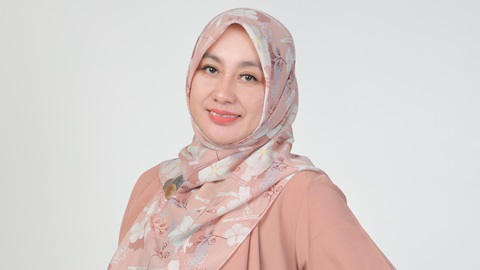Experiential Learning Made Possible Online
Dr Adeline Yong
(PhD, Class of 2020)
Dunman Secondary School

Dr Adeline Yong (PhD, Class of 2020) reveals how she was able to keep her science students fully engaged despite the limitations of a virtual learning environment when schools were closed to curb the spread of the COVID-19 pandemic last year.
Her friends and colleagues might know her for her love of observing ghost crabs on hot, sandy beaches. Her students from Dunman Secondary School, however, would have this passionate Biology teacher to thank for some interesting Science lessons at the peak of the pandemic.
“Let me just state for the record that it wasn’t the chapter on the birds and the bees,” clarified Adeline. Rather, the buzz had come about due to a Science Kit she had helped to put together to get her students to observe cells.
According to this self-confessed hands-on teacher who enjoys exploring new ideas and learning, the Science Kit idea arose out of a need to deepen student engagement when home-based learning went full scale in 2020. This was especially the case for science teachers, since there was no access to the laboratories during school closure. “This got me thinking about alternative ways to facilitate the learning of science. The key was to retain the element of discovery, since the topic on cells is typically taught via practical sessions in the Biology lab,” Adeline recounted.
Once the idea crystalised, she quickly assembled a Science Kit, which was distributed to students before school closed for home-based learning. Each kit comprised a Foldscope (a paper microscope created by a team at Stanford University), glass slides, cover slips, a water plant and an onion. The objective was to enable students to still be able to observe cells while learning from home. Students could also record their observations by taking photographs of the cells using a mobile phone attached to their paper microscope.
“Instructions and videos on how to assemble the paper microscope and prepare the specimen slides for observation were disseminated via the online Student Learning Space. Some students got excited about the Foldscope, because it allowed them to observe living things around them with a microscope for the first time. Moreover, they could share their observations with the rest of the class,” Adeline said. Over and above their assigned tasks, students also recorded and shared other interesting images and videos, such as the muscular movements in the digestive system of ants, guard cells and the pollen grains of flowers.
Adeline also noticed that some of her Secondary 4 Biology students had difficulties applying the principles and concepts from the ‘O’ level syllabus when answering questions that were set in a different context. To help students tackle their exam questions in a logical and deductive manner, Adeline and her colleague utilised the class group chat to post selected videos of recent Science research developments. The daily videos came with short write-up to help students apply various biology concepts to the real world. By making it a point to choose research videos that were set in Singapore, Adeline got students to appreciate the many interesting solutions to authentic problems, and the wide range of science innovations in Singapore. This led to deeper discussions in the class group chat, which would continue when school reopened.
As someone who had discovered her own passion for science through tinkering with common household items and exploring the beach during weekend fishing trips with her dad when she was in primary school, Adeline was determined not to let COVID-19 dampen the spirit of learning and discovery.
“Looking back at the year, and the support I got from my school and colleagues, I think there are many opportunities to encourage the learning of science outside the classroom. The small steps I took during the Circuit Breaker were nothing ‘above and beyond’. If anything, they merely provided a tool for students to be more curious about the world around them, and to learn by doing more hands-on science at home. Besides, I think they prove the point that the learning of science is not confined to the school,” she reflected.
The fact that students enjoyed the experience and were intrigued by what they could see with the Foldscope was the icing on the cake. “I had students asking me about how to prepare the slides of various specimens at home. They even wanted to observe their own eyelashes, cheek cells and skin cells. That, to me, is the winner!” she said with a laugh.
Eager to impart the joys of field research with her students, Adeline said: “Field research work requires a lot of improvisation and creative problem solving skills. During my years at the National Institute of Education (NIE), I learned a lot from Associate Professor Shirley Lim and the members of the Ecology Lab, who always have a clever ideas whenever challenged to think outside the box.”
To inspire new and graduating student teachers to connect better with students, Adeline shares three key factors underlying her own success: Continual Learning, Joy of Teaching and Adaptability. “I am curious to learn how I can be more effective as a Science teacher and to engage my students so that they can be excited by Science. The pandemic has highlighted the need to be adaptable, and teachers around the world have had to find alternative ways to teach effectively within a very short time.
“Also don’t be afraid to learn and use the many new and exciting tools and platforms available to support teaching. These resources and ideas are often easily accessed online, so it’s up to our creativity and lots of trial and errors to explore and try out different ways to figure out what works with our students,” she added.


.tmb-listing.jpg?Culture=en&sfvrsn=4e7824a_1)

.tmb-listing.jpg?Culture=en&sfvrsn=a7db34c2_1)


